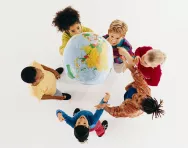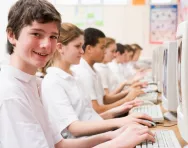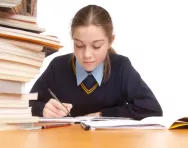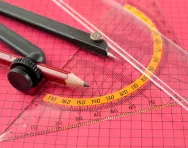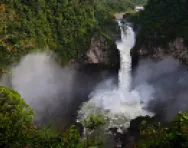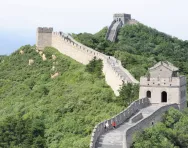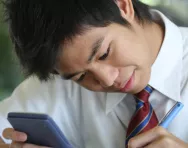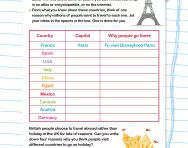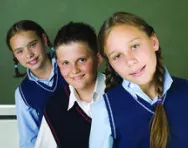Important update from TheSchoolRun
For the past 13 years, TheSchoolRun has been run by a small team of mums working from home, dedicated to providing quality educational resources to primary school parents. Unfortunately, rising supplier costs and falling revenue have made it impossible for us to continue operating, and we’ve had to make the difficult decision to close. The good news: We’ve arranged for another educational provider to take over many of our resources. These will be hosted on a new portal, where the content will be updated and expanded to support your child’s learning.
What this means for subscribers:
- Your subscription is still active, and for now, you can keep using the website as normal — just log in with your usual details to access all our articles and resources*.
- In a few months, all resources will move to the new portal. You’ll continue to have access there until your subscription ends. We’ll send you full details nearer the time.
- As a thank you for your support, we’ll also be sending you 16 primary school eBooks (worth £108.84) to download and keep.
A few changes to be aware of:
- The Learning Journey weekly email has ended, but your child’s plan will still be updated on your dashboard each Monday. Just log in to see the recommended worksheets.
- The 11+ weekly emails have now ended. We sent you all the remaining emails in the series at the end of March — please check your inbox (and spam folder) if you haven’t seen them. You can also follow the full programme here: 11+ Learning Journey.
If you have any questions, please contact us at [email protected]. Thank you for being part of our journey it’s been a privilege to support your family’s learning.
*If you need to reset your password, it will still work as usual. Please check your spam folder if the reset email doesn’t appear in your inbox.
What children learn in Key Stage 3 geography

In Key Stage 3 geography, learning deepens and children continue to investigate a wide range of people, places and environments. They start to learn about the geographical patterns and processes and the political, economic, social and environmental factors affecting people and places.
They also learn about the interdependence between places and environments and carry out geographical enquiry inside and outside the classroom. They may ask geographical questions such as, “How and why is this landscape changing?”, “What is the impact of the changes?” and “How do different people feel about this?”


Download Year 6 to 7 transition packs
- English & Maths transition packs
- Practise journalistic writing, figurative language, persuasive text and more
- Revise key maths methods and concepts
Your child will collect and analyse statistical evidence to answer such questions and be encouraged to develop a personal opinion. They will also use a wide range of geographical skills and resources, such as maps, satellite images and ICT to answer questions.
Your child’s geographical vocabulary will also be extended (using terms such as ‘drainage basin’ and ‘urban regeneration’) and they will have a greater awareness of the location of places and environments studied and in the news.
The KS3 geography curriculum
The geography curriculum in Years 7 to 9 is split into four areas.
Locational knowledge
- Pupils develop their spatial awareness of countries using maps of the world. They study Africa, Russia, Asia and the Middle East, focusing on their environmental regions, including deserts, countries and major cities.
Place knowledge
- Children study the geographical similarities, differences and links between a region in Africa and a region in Asia.
Human and physical geography
- Pupils study physical geography, including plate tectonics, rocks, climate change and coasts; and human geography, including population, urbanisation, international development and natural resources.
- They learn how physical and human processes affect landscapes, environments and the climate, and how human activity relies on natural systems.
Geographical skills and fieldwork
- Pupils develop their knowledge of globes, maps and atlases, in the classroom and in the field.
- They learn how to interpret Ordnance Survey maps.
- They use Geographical Information Systems (GIS) to view, analyse and interpret places and data.
- They do fieldwork in contrasting locations to collect, analyse and draw conclusions from geographical data.
Lesson examples
Here are some examples of what teachers cover in class:
- Year 7 pupils put together a questionnaire in order to find out what people’s journeys are like to and from school. They present their findings in a variety of bar graphs and a map. They then evaluate the reliability of their findings.
- Year 8 pupils put together a report, in the style of a newspaper article, covering a natural hazard of their choice. Earlier, the class had prepared for the task by brainstorming their geographical knowledge.
- Pupils in Year 9 create cartoons to show the impact of tourism on developing countries by using limited drawing and painting materials – no ballpoint pens, pencils or felt tips.
Help your child at home
- Use music, films and soaps as sources of geographical information to help your child understand and develop a sense of place and to be aware of topical issues. It will enable them to explore patterns and processes, interaction between people and places, environmental issues, and socio-economic and physical differences.
- Encourage your child to consider how technology changes the way we interact with the environment and each other. How do social networking sites enable global communities to interact? What effect might this have on people in the developing world?
- Use postcards, posters and pictures to discuss other places. Think about where the image was taken. Are there any people in the image? What might their lives be like? What are they doing? What might they be saying? What objects are in the image, and what are they for? What is the environment like?
